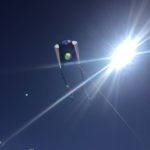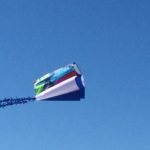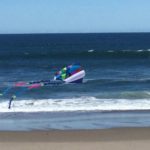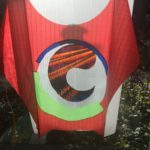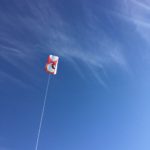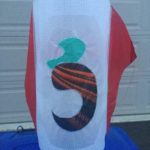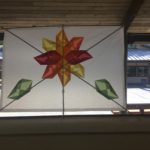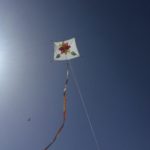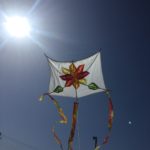This last year I decided to take a break from running the raffle at the Oregon Kitemakers Retreat (which I’ve handled nearly every year since it began) and take a class for the large Graph Bird taught by Folke Gfrörer.
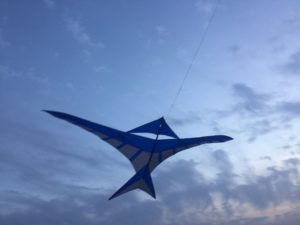
I also took a little time to help my middle son with a class that he expressed interest in for a streamer tail made from scraps. Fred Marchand did a great job introducing us to a technique originally used by Ron Buttons. While most of the students didn’t seem to appreciate all the work the technique entailed, I’m still fascinated with the results.
I was doubly fortunate this kitemaking season, because at the previous OKR I had won room and board for the kitemakers conference in Washington. While I couldn’t take advantage of it last year, the organizers a gracious enough to allow the winner a two year window.
I wasn’t particularly drawn to any of the large classes by the descriptions given (although two of the teachers I consider superstars, and a third is an incredible personality that I might have to move to that category as well), although after seeing some of the results from two of those classes I had some brief regrets at not getting in on them. Those seconds thoughts were brief because I wound up taking immense pleasure with the three classes that I took.
I started the weekend by clearing an item from my bucket list and sitting through the beginning sewing class taught by Gerry Pennel. This class is a perennial at both the Oregon and Washington events, and I was fortunate that this session was well attended. Gerry shared lots of great tips for those new to sewing or kitemaking, and plenty for me as well.
I tried to make a nuisance of myself by modifying the sled kite kit from the class using a twist on the technique I learned at OKR. I used some of my own scraps to replace a section of the sail to try to get a stained glass effect through the vent in the sail. The effect is more subtle than I was shooting for, but it is still a fun kite. I also used some of my scraps in the tail for a little more flair.
I turned this over to an acquaintance that had been asking recently about the best kite to buy.
The afternoon after Gerry’s class was filled with another sled kite (one that I haven’t been lucky enough to win in a raffle, although the maker regularly donates one). The Nishi sled by Suzanne Sadow is a smaller kite, but a nice flier that dosen’t require a tail to fly. Suzanne also decorates each of these kites differently, making them even more fun. The kite itself is easy enough to make, but the great part of the class was the range of materials, prints, shaped guides, and examples that were provided so that each kitemaker could use their own creativity on these little pieces. To add to the fun with this project we got to choose our own colors for the kite’s sail pieces ahead of time, which I had my youngest help with (currently his favorite color is red).
While I didn’t (technically) finish this kite in class it was far enough along to briefly fly for this first shot. I was very excited to discover a great way to display this little kite, which will be used in upcoming raffles (you can see if you look closely at the other pix).
I entered the third class not expecting much, after all I already make some paper kites, but quickly found plenty to be excited about. Firstly I was delighted to meet the teacher, Beth Gouldin, we wound up chatting about kites, art, and kids for much of the rest of the weekend. Also, Beth provided a pile of paper so that we each had a great selection of colors for our stars, that afforded me the opportunity to fold several pieces of paper to help find the star that I wanted.
It turned out that the one thing I didn’t see in the samples was asymmetry, so I shot for points that were different on both sides. Ultimately a geometric star almost certainly has to have some line of symmetry, but I had fun putting this together. I’m contemplating plating with these stars some more, but so many irons, so small a fire.
Unfortunately, that’s were the fun ended with this project. It took me weeks, and more than one attempt, to get this one out to fly for pictures. I wound up breaking the thing a couple times, trying to force it to fly in what I knew was too much wind. Being a paper kite, it is expected that it will not last for long, but I really wanted to get pictures of it in the air while it existed.
The three classes might have been a full weekend for some, but I knew that the schedule would get me three finished projects and still leave me some time to hang out with old friends (many of whom I hardly see anymore), as well as a chance to look over the grounds for the facility that the event moved to in the last few years.
I was very excited about some of the kites that I won in the fundraising raffle, more on them as I make repairs and get them back in the air. I also left the event with another to do list with entirely too many items, including putting together several class proposals to send out to all the workshop events that I can find.

